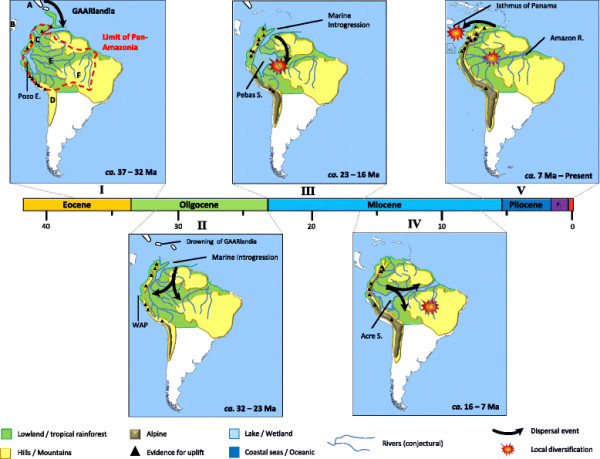Figure 4.

Temporal and biogeographic evolution of Neotropical Troidini. (I) Eocene-Oligocene boundary: Neotropical Troidini ancestors reached northern South America using intervening islands such as GAARlandia. (II) Oligocene: Amazonian and North Andean lineages become isolated by marine introgression such as the western Andean portal (WAP), thus leading the diversification near western Amazonia. (III) Early Miocene: Andean uplift created the Pebas System in western Amazonia, an extensive wetland that allowed steady diversification. (IV) Middle Miocene: the Pebas System drained and the Acre system initiated the formation of the Amazon River. The Pebas System delimited the Amazon basin into northern and southern parts, promoting the evolution of new lineages. (V) Pliocene-Present: the Amazon River became established and the Isthmus of Panama emerged, which facilitated land dispersal and promoted speciation. Letters (A-F) refer to geographic entities delimited for biogeographic analyses (see inset in Figure 1).
